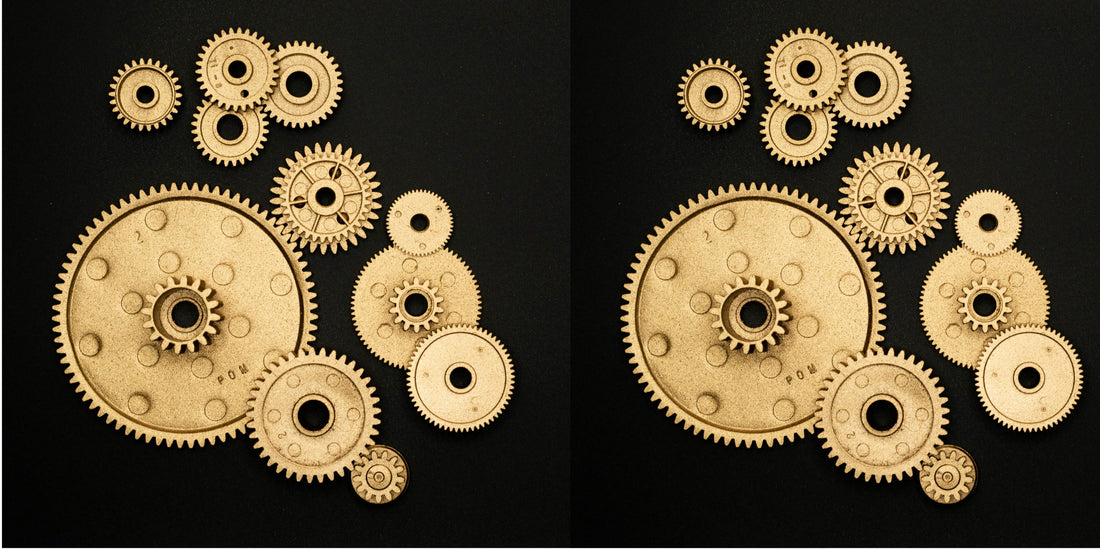
Faucet Components & Material Choices: A Complete Guide
Share
A modern faucet consists of several key components—handle, spout, valve/cartridge, aerator, internal waterways, and mounting hardware—each requiring the right material to ensure durability, safety, and performance. Handles and trim are best crafted from metals like brass or stainless steel (or heat-resistant plastics) for lasting strength, while spouts and bodies benefit from antimicrobial and corrosion-resistant alloys such as brass, copper, or stainless steel. The valve or cartridge inside, preferably ceramic-disc with metal housing, guarantees smooth, drip-free operation. Safe drinking water demands internal waterways made from lead-safe stainless steel, certified lead‑free brass, or PEX‑lined tubing. Finally, stainless or engineered plastic aerators control splash and conserve water, and sturdy metal fittings with silicone seals secure the fixture. Choosing quality materials for each part leads to faucets that are not only stylish but reliable and health-conscious.
1. Handles / Levers
- Role: Control water flow and temperature via single or dual handle setups.
- Common Materials: Brass, stainless steel, zinc alloys, or ABS plastic.
- Key Factors: Look for materials that tolerate frequent use and heat exposure. Metal handles offer durability, while ABS plastic can be lightweight and heat-resistant.
2. Spout & Body
- Role: Directs water into the sink; styles include gooseneck, high-arc, pull-down.
- Materials: Brass, copper, stainless steel, zinc-plated alloys, or chrome-plated plastic.
-
Benefits:
- Brass & Copper: Naturally antimicrobial and corrosion-resistant; develop unique patinas over time (copper).
- Stainless Steel: Highly durable and lead-free; may show water spots.
- Zinc/Plastics: Economical, but more prone to wear and corrosion.
3. Internal Valve / Cartridge
- Role: Manages flow and temperature control.
-
Primary Types:
- Ceramic-disc valves: Use two hard ceramic discs to seamlessly control water; they’re long-lasting, drip-resistant, and easy to operate, though sensitive to debris and more expensive.
- Metal (brass) cartridges: Durable, corrosion-resistant, and smooth to operate—an affordable mid-range option.
- Washer-style/compression: Budget-friendly but prone to drips and leaks.
Tip: Ceramic valves are ideal for high-use faucets; metal cartridges are reliable and easier to replace; compression types suit low-traffic or cost-conscious installs.
4. Internal Waterways & Supply Lines
- Role: Carry water from pipes through the faucet.
- Materials: Stainless steel, lead-free brass, or PEX-lined hoses.
- Why It Matters: With direct contact to your water, these parts must be certified lead-free (≤ 0.25%) and corrosion-resistant. Stainless steel offers maximal safety; PEX-lined hoses avoid metal contact altogether.
5. Aerator
- Role: Mixes air into water to reduce splash and conserve water.
- Materials: Stainless steel or engineering-grade plastics.
- Maintenance Note: Easy to clean or replace to maintain smooth, splash-free flow.
6. Mounting Hardware & Seals
- Role: Ensures stability and seals leaks—includes nuts, O-rings, washers, and gaskets.
- Materials: Metal hardware with rubber or silicone seals.
- Tip: Tighten securely (without overdoing it) during install and periodically check seals.
Choosing the Right Material: Pros & Cons
|
Component |
Ideal Materials |
Pros |
Cons |
|---|---|---|---|
|
Body & Spout |
Brass, Copper, Stainless |
Elegant finishes, durability, antimicrobial (brass/copper) |
Brass/copper can tarnish/patina; stainless shows spots |
|
Handles |
Brass, Stainless, ABS |
Excellent durability; metal offers consistent feel |
Plastic handles may chip over time |
|
Valve/Cartridge |
Ceramic disc, Brass cartridge |
Ceramic: smoother, drip-free; Brass: cost-effective |
Ceramic prone to debris clogging; brass less precise |
|
Waterway |
Stainless, Lead-free brass, PEX |
Safe for drinking, corrosion resistance |
Lead-free brass may cost more; mixing metals needs care |
|
Aerator |
SS or engineering plastic |
Splash control, water-saving |
Needs periodic cleaning |
|
Hardware |
Metal nuts, silicone seals |
Long-lasting infrastructure |
Rubber seals wear out—monitor over time |
Material-Specific Insights
-
Stainless Steel (304/316)
- Ideal for: Body, spout, internal waterways
- Why: Naturally lead-free, strong, resists corrosion; trade-off is visible fingerprints.
-
Solid Brass (Lead-Free)
- Ideal for: Spout, body, handles
- Why: Timeless, antimicrobial, corrosion-resistant; ensure certified ≤ 0.25% lead content.
-
Copper
- Ideal for: High-visibility spouts or body
- Why: Stylish, antimicrobial; requires patina upkeep.
-
Plastic (ABS, POM, PSU)
- Ideal for: Non-structural handles, aerator housing, cartridge interiors
- Why: Lightweight, heat-resistant, corrosion-proof; high-grade forms are reliable.
-
PEX-Lined Waterways
- Ideal for: Internal water channels
- Why: Eliminates metal contact with water entirely; NSF/ANSI certified as safe.
Final Takeaways
- Prioritize fruit-safe internal materials, such as lead-free brass, stainless steel, or PEX-lined tubing.
- Choose durable valves: ceramic-disc for longevity; brass cartridges for easier repair; avoid compression if frequent use is expected.
- For body and finishes, balance aesthetics and upkeep: brass and copper offer luxury and antimicrobial benefits; stainless is practical and hygienic.
- Ensure certifications: seek NSF/ANSI or Prop 65 labels to confirm low lead and safety standards.
